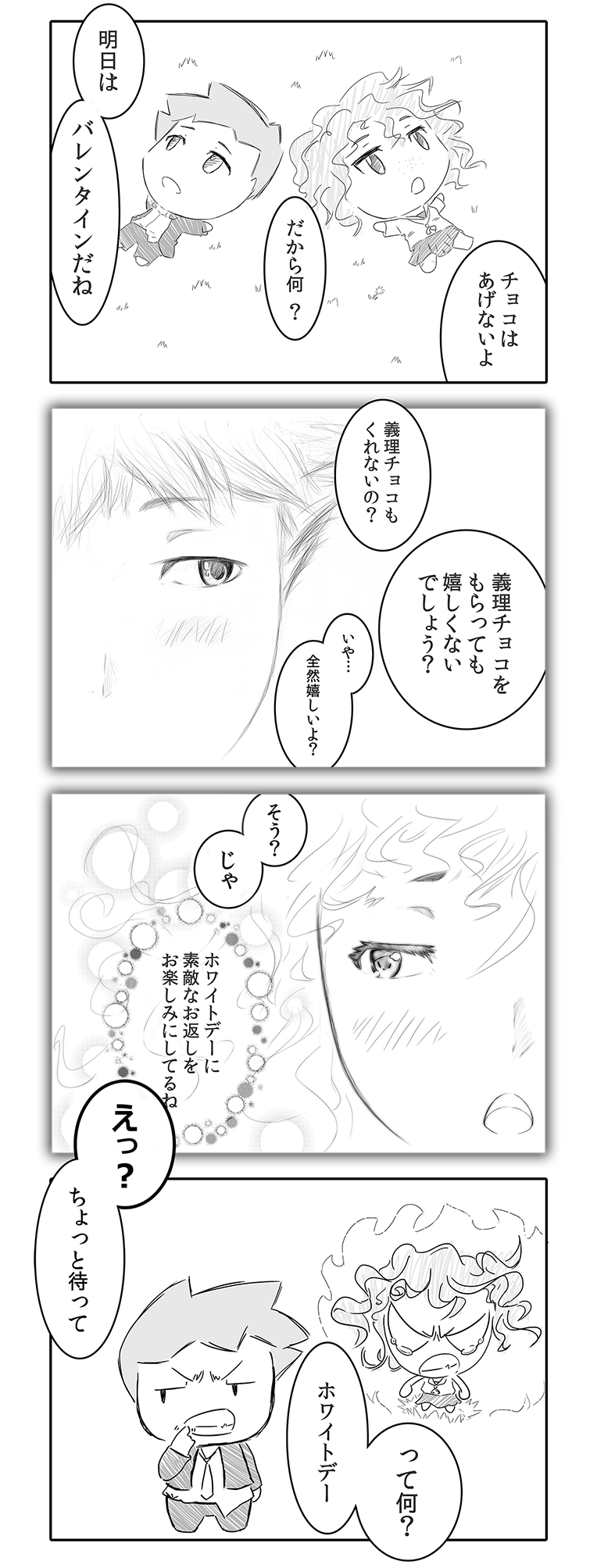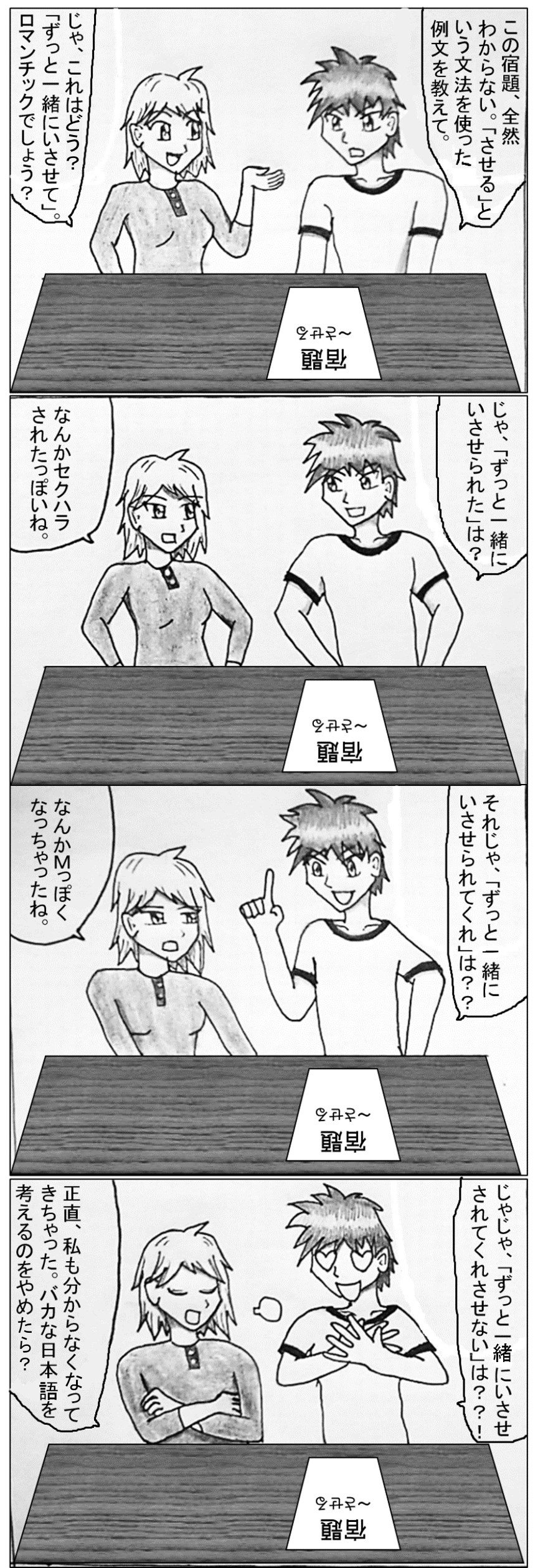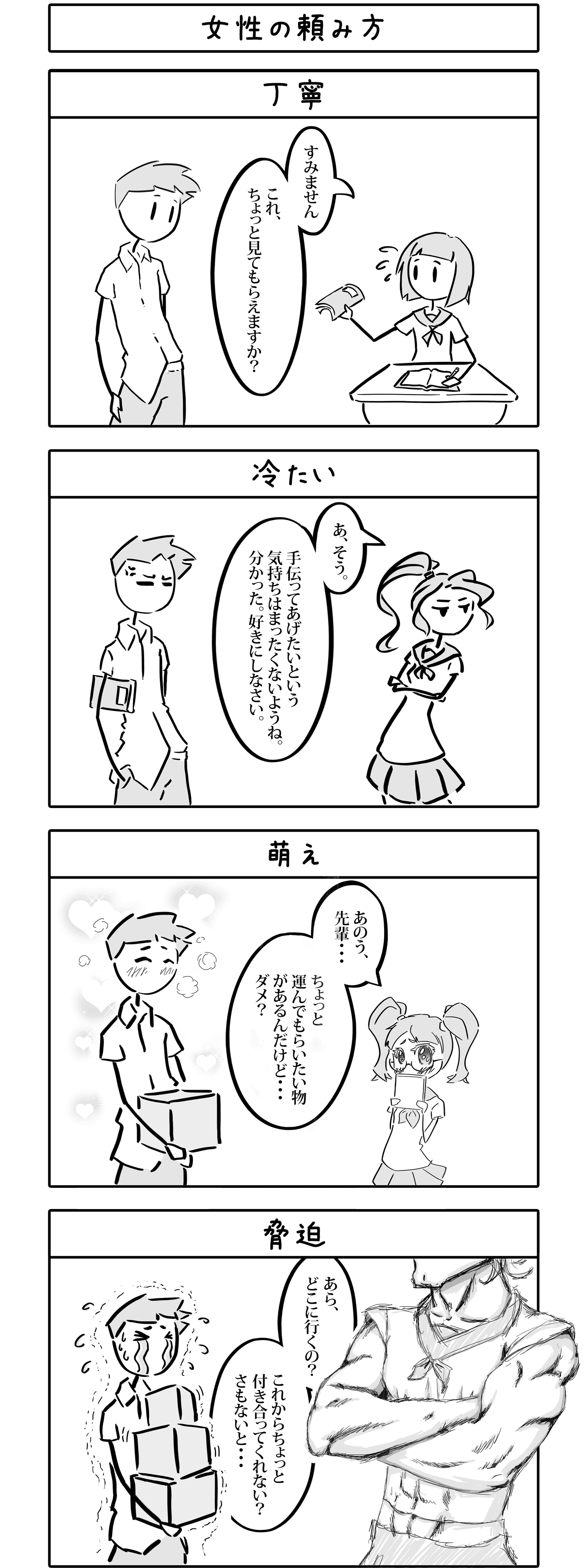In this chapter, we learned how to deal with uncertainty in various ways. I’m sure we can all think of many situations where things are not 100% certain. Common scenarios include talking about the weather, news, and the future.
Below is a list of sample topics you can write about or discuss with your conversation partner (either in casual or polite form as appropriate).
- 何ヶ国語話せますか。
How many languages can (you) speak? - 死ぬ前に一回してみたいことはある?
Is there something (you) would like to try doing before (you) die. - うっかりしてしまったとても恥ずかしいこと。
Something very embarrassing (you) did inadvertently. - 百万長者だったら何をしますか。
What would (you) do if (you) were a millionaire? - どんな願いでも一つだけ叶えたら、何を願いますか。
If (you) could grant any one wish, what (would you) wish for?
Distinguishing similar grammar
In this chapter, we learned many different ways to say similar things. In teaching, it’s convenient to group similar concepts and cover them together. However, when it comes time to use them in practice, it can create confusion as learners try to decide which grammar to use and get caught up in trying to find the difference between similar concepts.
Let’s take a look at some examples and why one grammar is more appropriate over others in various situations. It’s important to keep in mind that there is often no one right answer as it really depends on what you want to say exactly.
Like, it’s not like I like it like that
“Like” is a word in English that has many usages and can even be overused. With words like this, it’s natural that other languages have many different types of grammar that all translate to the same word in English. Therefore, we need to learn to make distinctions that we usually don’t think about.
- Is it an impression of the future or guess (with some uncertainty)? Use 「~そう」.
- これ、おいしそうですね!
This looks tasty! (haven’t tasted yet) - ここにはなさそうだけど、もう一度探してみるよ。
It doesn’t seem to be here but (I’ll) look one more time. (guessing) - 楽しそうだな。私も行こうかな?
Seems like fun (impression). I wonder if I should go too?
- これ、おいしそうですね!
- Is it based on hearsay? Use 「らしい」 or 「だ/た+そう」. Use the former if it’s an impression based on general hearsay and the latter if heard from a specific person.
- そこのお店は、結構安いらしいよ。
(I) heard (in general) that that store is pretty cheap. - 昨日はかなり大変だったそうよ。
(I) heard (from someone) that yesterday was very rough.
- そこのお店は、結構安いらしいよ。
- Is it resembling behavior ie “acting like a…” or trigger an emotion? Use 「らしい」.
- どうした?君らしくないな。
What’s the matter? (It’s) not like you. (behavior). - そのドレス、とてもかわいらしいよ。
That dress is very cute! (triggers feeling of cuteness)
- どうした?君らしくないな。
- Is it a resemblance in appearance or manner? Use 「みたい」, 「よう」 (polite/formal), or 「っぽい」 (slang). This is also more generic and can be in other situations without the connotations of other grammar.
- 明日は雨みたいです。
Looks like tomorrow is rain. - こちらのチームは苦戦しているようですが、どうしますか。
It appears our team is having a hard fight so what should (we) do? - その服は、ちょっと男っぽくない?
Don’t those clothes look a bit manly?
- 明日は雨みたいです。
Are you trying hard enough?
We learned several grammar that all mean “try” but with difference nuances such as “try” vs “attempt”. While they are often interchangeable, the difference is mostly due to how much effort is exerted.
- Is it a light effort, experimentation, or just trying something new? Use 「te-form+みる」.
- ちょっとやってみるよ。
I’ll give it a shot. - これを食べてみて。おいしいよ!
Try eating this. It’s tasty! - ドアを開けてみて。
Try opening the door.
- ちょっとやってみるよ。
- Is it an attempt with concerted effort or setting about to do something (just before actually starting)? Use 「volitional + とする」
- ドアを開けようとした。
Attempted to open the door (such as forcing it open). - 話しかけようとしたら、突然電話が鳴った。
When (I) set out to talk to him/her, (the) phone suddenly rang.
- ドアを開けようとした。
- Is it a goal or an attempt to reach a certain state such as behavior? Use 「ように(する/なる)」
- あまり大きい音を出さないようにしてね。
Try not to make a big sound, ok? - 最近はもっと社交的になろうとしているんだけど、会話が苦手でなかなか難しい。
Lately, (I’ve) been trying to be more social but (I’m) bad at conversation and (it’s) pretty hard.
- あまり大きい音を出さないようにしてね。
In that case, when and/or if then…
The conditionals are extremely tricky because of the 4 different types and all the various conjugations. We already looked at some examples using various scenarios. To further simplify things, let’s start by looking at the conditionals that are most distinctive and easy to separate.
- Is it a supposition ie, “if that’s the case…”? Use 「なら(ば)」. 「ならば」 is very formal so usually just 「なら」.
- それなら、仕方がないね。
Well in that case, (I) guess (it) can’t be helped.
- それなら、仕方がないね。
- Is it a natural consequence ie, “when not if”? Use 「と」. Also, casual speech often uses 「と」 just because it’s the shortest.
- スーパーなら、その角を右に曲がるとすぐそこにあるよ。
If you mean (the) supermarket, if (you) turn right at that corner, (it’s) right there. - メガネがないと、何も見えないでしょう?
With no glasses, (you) can’t see anything, right?
- スーパーなら、その角を右に曲がるとすぐそこにあるよ。
- Did it already happen? Use 「たら(ば)」.「たらば」 is very formal so usually just 「たら」.
- 今朝起きたら、顔にニキビが付いていた。
When (I) woke up this morning, (a) pimple was attached to (my) face.
- 今朝起きたら、顔にニキビが付いていた。
- Is it a generic “if” statement? Use 「ば/たら(ば)」. These are usually pretty interchangeable though there are some very slight differences.
- もっとお金があれば、色んな欲しいものが買えるのにな。
If (I) have more money, (I) could buy various things I want. - もっとお金があったら、色んな欲しいものが買えるのにな。
If (I) had more money, (I) could buy various things I want.
- もっとお金があれば、色んな欲しいものが買えるのにな。



